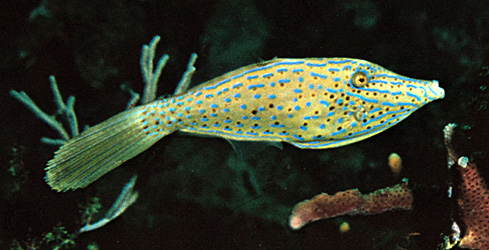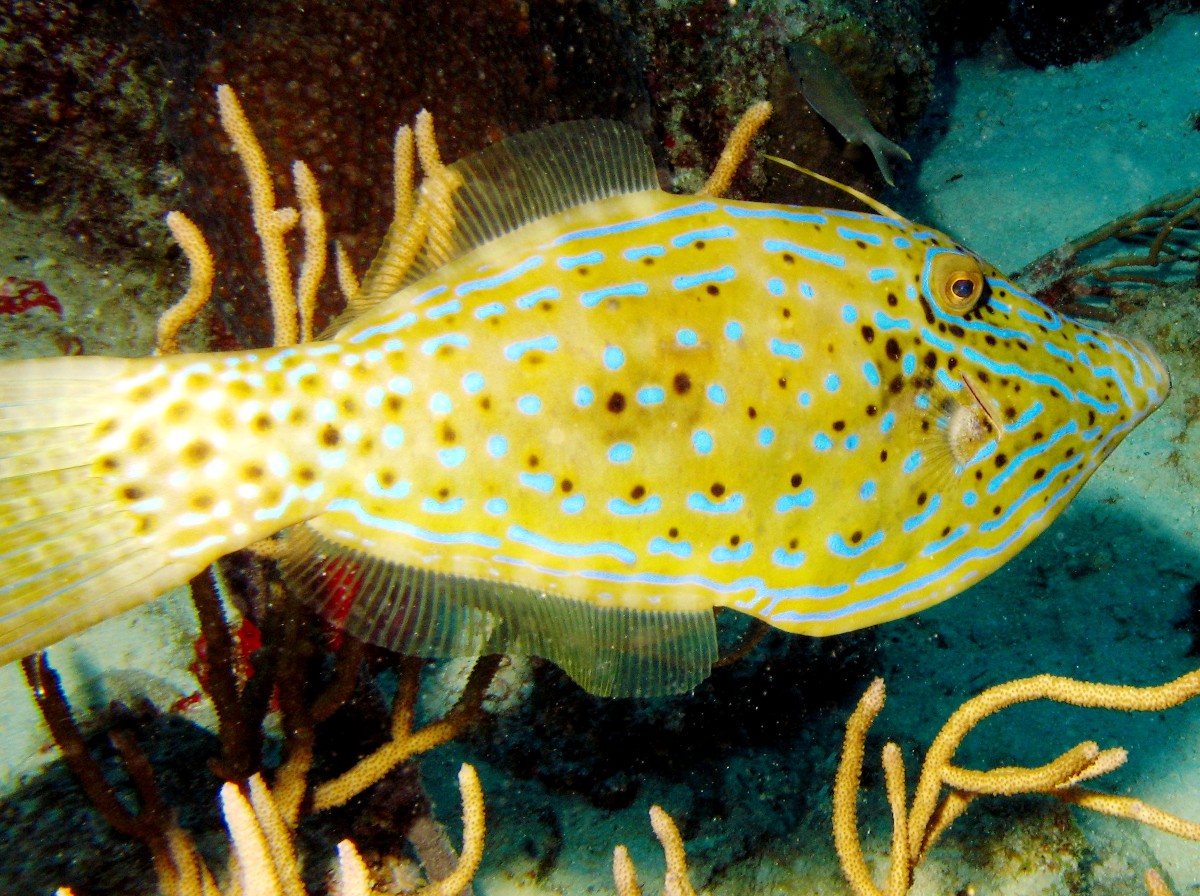
Aluterus scriptus
FAMILY
Monacanthidae
TAXONOMY
Aluterus scriptus Osbeck, 1765, China Sea.
OTHER COMMON NAMES
French: Robe de cuir; German: Schrift-Feilenfisch; Afrikaans:
Bekrapte leerbaadjie; Japanese: Sфshihagi.
PHYSICAL CHARACTERISTICS
Body compressed, elongate, and somewhat rhomboid, with a
concave snout and a relatively large and rounded caudal fin.
There are two spines and 43–50 soft rays in the dorsal fin and
46–52 soft rays in the anal fin. The color is olive-brown to
gray or tan with blue lines and spots in adults and yellowish
brown with black spots in juveniles. Grows to more than 43.3
in (110 cm) in total length.
DISTRIBUTION
Tropical, subtropical, and warm temperate waters worldwide.
In the Indo-Pacific from South Africa east to the Gulf of California
and Colombia. In the Atlantic from Nova Scotia south
to Brazil in the west and at Saint Paul’s Rocks, Cape Verde,
Ascension Island, and Sгo Tomй Island in the east.
HABITAT
Found on seaward or lagoon coral reefs, rocky reefs, sea grass
beds, and algae beds. Occasionally shelters under floating trees
or other objects. Depth range is 13–394 ft (4–120 m).
BEHAVIOR
A solitary species that, despite its relatively large size, often
moves cryptically within or between habitats.
FEEDING ECOLOGY AND DIET
Omnivorous. Feeds on hydrozoans, gorgonians, colonial
anemones, tunicates, sea grass, or algae.
REPRODUCTIVE BIOLOGY
Not well known but probably lays demersal eggs. The larvae
are pelagic and well equipped for a long pelagic existence, thus
explaining this species’ remarkable pattern of geographical
DISTRIBUTION
.
CONSERVATION STATUS
Not listed by the IUCN.
SIGNIFICANCE TO HUMANS
Collected for the aquarium trade. Also a game fish at some localities.
Taken for subsistence elsewhere. This species has been
reported to cause ciguatera poisoning.
Photo Gallery of - Scrawled filefish





 Animalia Life
Animalia Life